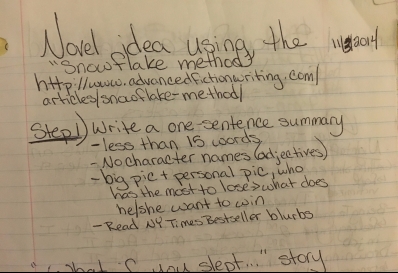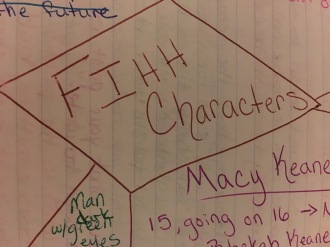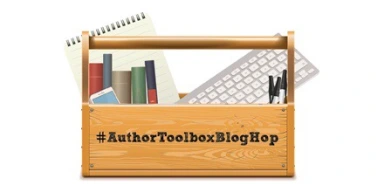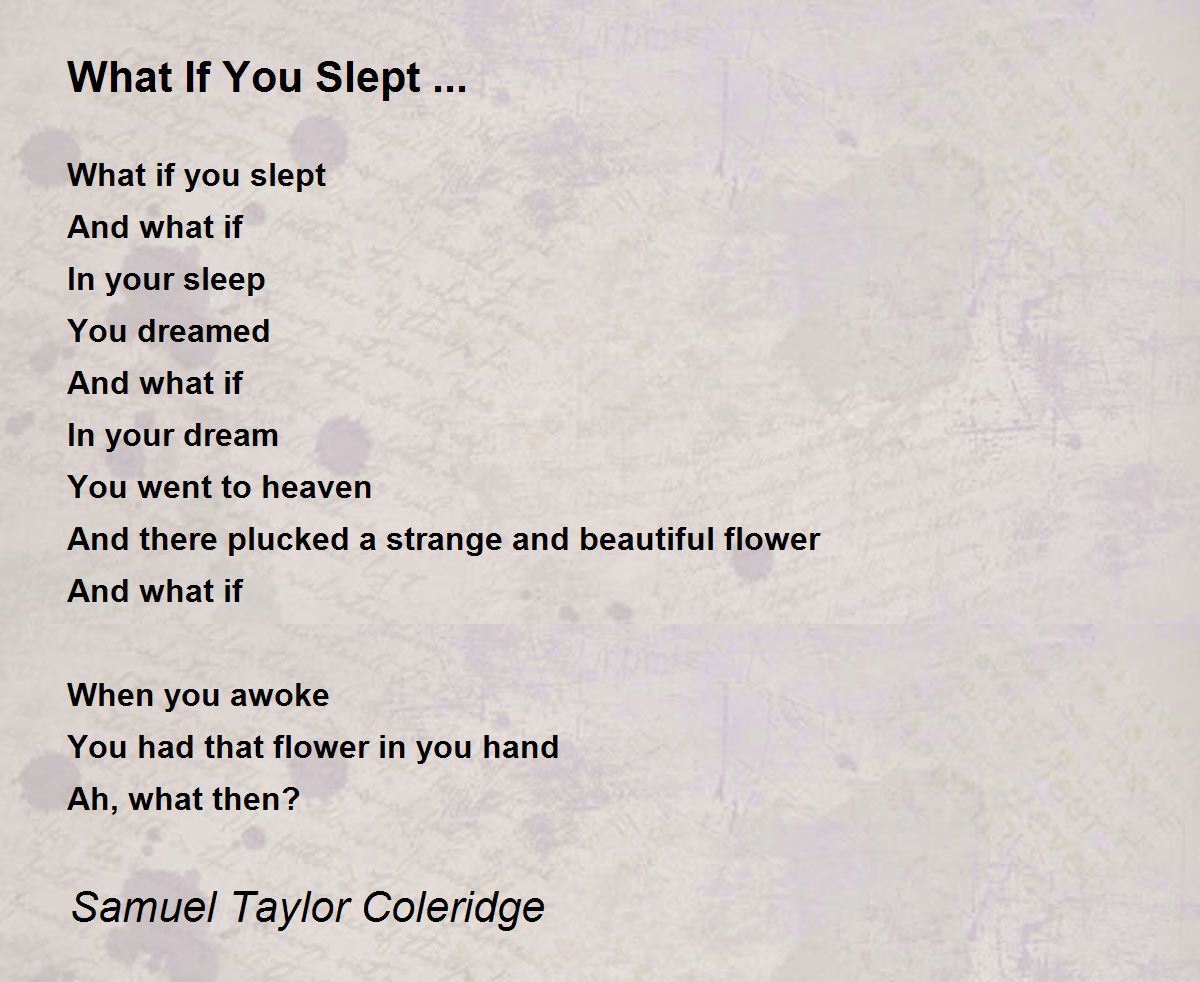What can I share for this month’s Toolbox? What can I write about that could be even slightly helpful to other writers?
I’ve been trying to answer this question for a few weeks in preparation for this post, but I still didn’t have an answer until recently. Someone suggested I write a brainstorm about zombies… Well, zombies aren’t on the agenda this time; however, brainstorming was a great idea!
This month’s toolbox will be dedicated to brainstorming, plotting, outlining, and all the little details that go into planning for a first draft — that is… if you’re not a pantser (someone who dives into the first draft without prior planning).
I’ll walk you through the planning process I took with my (yet to be published) first novel. Planning, like the writing process, is recursive — the appearance of linear steps doesn’t necessarily equal a fluid process, but a few steps do help…
1. Start with an idea.
No matter what your next step is, the first step is to have an idea. This idea can come from anywhere. You may have seen a cow while driving down the road or heard lyrics that spoke directly to your imagination. Maybe you were talking to your best friend during lunch and something at that moment stuck out to you.
Grab it! Take hold of that idea. See where it leads. My idea came from a poem by Samuel Taylor Coleridge, a poem asking a question.
2. Take that idea and see what shape it takes…
That would make a great novel! I have an amazing story idea!
How many times have those words come out of your mouth? How many times have you remembered your idea over the next few days before it faded into the everyday world that is life, into the abyss?
Don’t waste any time! Write it down! Take that wonderful idea to your writer’s notebook, and see what you’ve got. Free-write as much as you can about all the possibilities swirling around in your mind at that moment. It doesn’t matter how ridiculous they sound — write them down.

That is just what I did. On October 12, 2014, I wrote down the story idea that was zig-zagging its way around my brain.
Would I use everything I wrote on this page? No. I have no idea who “Darren” is anymore since he’s not part of the current round of revisions I’m on, but he was important at one time, which is all that matters. The idea is written.
3. Choose a direction… a path…
Now what?
Do you get stuck on this step? I did. I had never written a novel-length draft before, which meant that I had definitely not planned for one, either. How in the world was I supposed to do that? What was I supposed to do next?
Research.
There. I said it. This isn’t the kind of research you’d expect, though. It’s research into different planning processes for building up to your first draft. If you don’t know how to get there, the best thing to do is see how someone else did it. Right?

So I did. There are so many different ways to plan a novel. Did you know that? Out of the numerous ways I found, I decided to choose Randy Ingermanson’s Snowflake Method because it seemed the most straight-forward for a novice (and it was free…).
It took me quite a few tries with his first step, a one-sentence summary, because I couldn’t decide how old my MC (main character) was going to be.
More research.
Have I mentioned before how much I actually enjoy research? I really do! (Is that weird?)
Around the time I was starting to plan, I’d read a new YA (young adult) dystopian novel, Rite of Rejection by Sarah Negovetich. Because of this novel, I thought about my MC… Maybe she should be a young adult… Maybe she should live in a dystopian world… Maybe…
After my research, I decided Macy should be a teenager, but she wouldn’t live in a dystopian world. Instead, she would be the star of an epistolary novel, an idea that came to me during another free-write for ideas (see that recursive writing thing?).
I finally had “step one” of the Snowflake Method.

4. Start outlining… possibly scene-by-scene…
The snowflake method will eventually lead you through meeting your characters, discovering their motives and end goals, and figuring out why each of them is important to your story.
I didn’t know most of this before I started plotting scenes, however.
Don’t tell, but that means that I didn’t follow this method to the letter. You should know, if you don’t already, that you are not obligated to follow anyone’s method verbatim. You are a writer, different from other writers, which makes your process unique to you. Keep that in mind as you continue.
I did keep a small chart of characters handy, though…

Anyway, back on track… I did like the scene-by-scene outline. Randy suggested using a spreadsheet, which I love because it allows you to move things around in the future, but I didn’t. This particular time, I used my notebook.
And I started over several times when the story changed somewhere in the middle… See why the spreadsheet would’ve been helpful?
See how many times it changed in such a short amount of time? I even started color-coding after awhile for POV (point-of-view).
I have encountered writers who don’t like the scene-by-scene outline (or chapter-by-chapter as I’ve seen some others do) because they feel it inhibits creativity. I am of the opposite mindset. The scene detail only states what will happen. It doesn’t state the why or how of the situation.
The only downfall to this outline is when characters start changing your story (trust me, they will) — then you’ll find out just how important an editable outline truly is. But don’t worry about that now… This is only the planning stage.
5. Leave a little room for whatever comes along.
Even if you plan, the whole basis of the story could change if one ornery character decides he doesn’t like the backstory you gave him. Or, in my case, he doesn’t want to reveal his backstory to you until you are well into the first draft.
As stated above, characters will change your story for you. They will let you know when something is working or not as you’re drafting, so keep an open mind while you’re planning. Try not to get too specific.
Write down your thoughts as you come to them to see if they get answered during your first draft….

A great help may even be to write down a list of all the questions you have about your idea: the characters, the main and sub-plots, the action, etc. Keep a running list of things that are important and things that could change.
Sometimes you can even take a break from planning and learn some new words that relate to your idea: MC’s job lingo, vocabulary related to setting, etc. Since my idea revolves around nightmares, I dove into a couple terms related to that, which may end up having nothing to do with my novel in the end, but they’re good to have anyway.
What if I get stuck?
Don’t worry! Is it writer’s block that has you worried? Or do you simply need some ideas to push you toward the next step? I don’t have all the answers, but I can offer you a few methods that could help:
- make lots of lists: characters, plot bunnies, settings, conflicts, etc.
- draw a plot diagram: where do you imagine the story going, where is one particular character’s story going, etc.
- free-write: whatever comes to mind, a scene you’re eager to see on paper, a letter from your character to you, etc.
What about you? What do you do when you get stuck? How do you plan for a first draft? I’d love to see what your strategies are in the comments below!
Author Toolbox
This post is part of the #AuthorToolboxBlogHop, which is dedicated to helping writers become stronger and more confident in their craft. Click here for more information, to continue hopping through other posts, or to join in!

Resources:
Snowflake Method by Randy Ingermanson
“The 8 Habits of Highly Successful YA Fiction Authors” by Noal Feeny












I do a LOT more than five steps before starting a new novel, but I definitely appreciate this article – and all five of these steps are included!
LikeLiked by 1 person
Thank you for your comment!
Five steps is broad since some of them are many-faceted… What other steps do you include?
LikeLike
Thanks for this. I’ve made a note to check out the Snowflake method. And I need to be better about keeping a note of the random ideas that arrive, who knows they could become.
LikeLiked by 1 person
Do you have a place to keep your random ideas? I hope you find something that works for you! Good luck with the snowflake method, too. 🙂
Thanks for your comment!
LikeLike
When I first started planning I looked at the snowflake method and stole some ideas from it, but did my own thing with loose outlining and a lot of character and worldbuilding planning.
I love the screenshots of your notes. Did you add the color while you were creating them? I end up keeping most of my planning digital given my very tiny desk (24″ x 15″), but I love the free form of yours.
LikeLiked by 1 person
Thanks!! I use colored pens when I write, and I use colored pencils as I go when I’m color-coding. I love the freedom of a writer’s notebook offers. I don’t have a desk at home, but I do have a lap desk and my own couch (which is currently covered with notebooks, pens, and stuff)!
LikeLike
I’m always sort of envious of people who can work in physical books – it looks so vibrant and solid. Whenever I try, I end up getting frustrated and switch to typing, which is great in terms of keeping up with my thoughts, but doesn’t let you play with shape and space nearly as well. (Or colour, apparently! I’d never even thought of that!)
LikeLiked by 1 person
Thank you for your comment! I love handwriting my ideas. I feel that it gives my mind time to think before writing, especially since I write slower than I type.
I love playing with the space and color a writer’s notebook offers. I hope you can find a way for it to work for you!
LikeLike
So colorful! I love your notes. It is fascinating how that one seed of an idea can germinate. And it is so critical to keep an open mind in case something comes along that could change the book entirely, but for the better. As writers, we have to stay flexible!
http://micascottikole.com/2017/08/15/got-4-full-manuscript-requests-authortoolbox/
LikeLiked by 1 person
Thank you for your comment! We definitely have to stay flexible while we’re writing and planning. 🙂
LikeLike
Great tips (I use most of them!). Snowflake method stifles my imagination as does writing in scenes. I just seize up. I need a rough idea of where I’m going and a good idea of character conflict etc. then I off! I love writing the way but it means a lot more revision than if I could use something like the Snowflake method! 🙂 Scrivener helps a bunch with my disorganised mind however, thank heaven.
LikeLiked by 1 person
Thank you for your comment! The most important thing is finding what works for you!
LikeLike
What beautiful handwriting! I enjoyed all your pictures along with your words of advice. When I get stuck I have to talk out loud. I call friends or talk to my partner to get unstuck. Somehow when I speak a problem out loud, I can actually solve it myself 🙂 Great post 🙂
LikeLiked by 2 people
Thank you Erika! I agree with talking it out, which is what I’ve had to do recently while working on this round of revisions.
Thank you for your comment!
LikeLike
I’m exactly the same! Whatever problem I’ve been having, by the time I finish explaining it to someone out loud, I’ve usually found the beginnings of the solution.
LikeLiked by 1 person
I’m a panster by heart, but do try to do some outlining. I’ll have to check out the snowflake method. Maybe it will work for me. Fun article to read today 🙂
LikeLiked by 1 person
Thank you for your comment! I hope you can find something useful in the snowflake method!
LikeLiked by 1 person
Looks like you had fun with it and that is as important as writing the thing. hehehe
Anna from elements of emaginette
LikeLiked by 1 person
Thank you for your comment, Anna! You’re right: it’s important to have fun with it!
LikeLiked by 1 person
Hi! This is awesome! I love that poem 🙂 I also love “who is Darren?” haha. I found an old draft of my novel and I’d originally named the main character Ashley. No offense to the name, I actually like it, but Ashley??? lol.
I go through your process almost exactly! Great minds, right? 🙂
Leslie
LikeLiked by 1 person
Thank you Leslie! Maybe I should throw a Darren in there for fun… hmmm…
Ashley, huh? You still stuck with the -y ending by choosing Ivy! Lol
Thanks for your comment!
LikeLiked by 1 person
I think that should be your catchphrase for when you don’t remember something: “Who’s Darren?” or “I just had a ‘who’s Darren’ moment” lol
LikeLiked by 2 people
Lol!! That would be great! Maybe that phrase “Who’s Darren?” will be in my novel! Bwahahaha!!
LikeLiked by 1 person
The snowflake method is one of the things on my list to take a look at. I’m more of a yes, but/ no, and kind of writer, but I’m always looking to expand my writing tools. Thanks for a peek inside your process
LikeLiked by 1 person
I have never followed every step of this method… I’m too much of a “what if” kind of writer to do so, but I think it still works for me.
Hope you like it when you check it out! Thank you for your comment!
LikeLiked by 1 person
Great post! I always found the Snowflake method a little TOO detailed for my liking – I outline but I really like to leave some wiggle room – but I can definitely see why other people love it.
Also, I love the colours in your notebook!
LikeLiked by 1 person
It is definitely detailed, but I tend to omit a few parts of it… 👀
I love to use color in my notebook because it makes things stand out to me. I try to teach my students the same thing.
Thank you for your comment!
LikeLike
I love Mind Mapping and the Snowflake method. They’re very visual. I also love playing “What If”. It can lead to many interesting paths to take.
LikeLiked by 1 person
Maybe that’s why I love it- I’m a visual learner. I had no choice but to leave what ifs for this novel since my antagonist refused to allow me into his mind until drafting.
Thanks for your comment!
LikeLike
I haven’t tried the “Snowflake Method” when it comes to planning a first draft. But I think it would apply to short stories as well. But I plan my stories before writing. I’ll write out the idea, come up with a cast of characters (usually two or three), and draft an outline highlighting the major plot points and how I want them to play out. After that, I start writing. I try to keep the outline in mind, but about 80% of the time, when I’m in a zone, I forget the outline and let the words flow. When it comes time to rewrite, I’ll craft a new outline, making note of details that have changed.
LikeLiked by 1 person
I’m sure it could easily be adapted to short stories. I know all about the zone, which tends to throw most plans out the window!
Thanks for commenting!
LikeLiked by 1 person
The snowflake method looks really interesting. It’s something I’d like to learn more about actually, but I’m wary of it, because I get the impression it’s based on idea clouds, and I’m not sure my linear brain can handle it! 🙂 Thanks for a wonderful post! Can’t wait for your next one!
LikeLiked by 1 person
I’m not sure what you mean by idea clouds…
Your linear brain would probably love the snowflake method since it has a step-by-step process, which leads the writer all the way to the first draft. It gives instructions and estimated completion times, too.
Thank you for your comment!
LikeLike
Interesting! I usually do an overall plot (what I think the story should be about) before breaking it down to character arcs, story arcs and then chapter-by-chapter. Then I’ll write everything from start to finish without editing — sometimes when revising I’ll find that I wrote a scene twice for some odd reason, but that’s good ’cause it means the scene was lacking something the first time around. By the time I start revising, a lot of what I wrote gets cut, rewritten or used for something else. The first draft is always fun 🙂 Thanks for sharing your process.
LikeLiked by 1 person
I also do an overall plot, but it happens throughout because it continues to change.
I am currently in the revision process, so I definitely know what you mean about lots of cuts and rewrites.
Thanks for your comment!
LikeLiked by 1 person
I’m gonna come back to this later this week! This is so helpful!
LikeLiked by 1 person
Thanks! I hope you enjoy it when you come back to it. 🙂
LikeLiked by 1 person